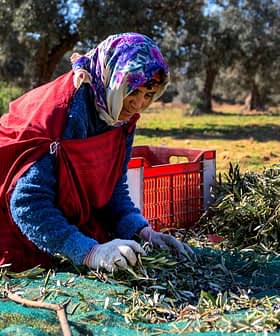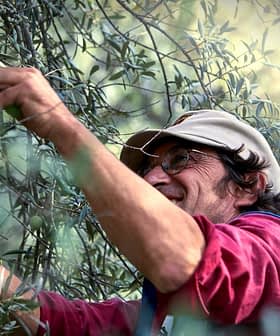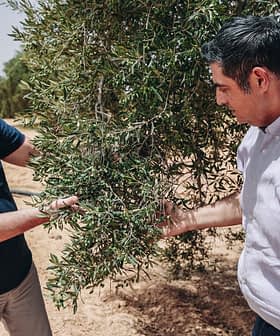Tunisian Olive Oil Production Falls to 23 Percent Below Five-Year Average
Low rainfall levels in the winter and spring, frequent heat waves and the unrelenting drought were attributed to the production drop.
Olive oil production in Tunisia is expected to reach 200,000 tons in the 2022/23 crop year, a decrease of 15 percent compared to last year, according to the country’s National Olive Oil Board.
Last year, Tunisia produced 240,000 tons of olive oil, according to the International Olive Council. Over the past half-decade, the North African country has yielded an average of 257,000 tons per annum.
Officials at the National Observatory of Agriculture (Onagri) blamed a lack of rainfall in central and southern Tunisia, drought, heatwaves and many producers entering an ‘off-year’ in the natural alternate bearing cycle of the olive tree for the production decrease.
See Also:Rising Prices Expose Untapped Potential for Tunisian ExportsHowever, production drops were not experienced uniformly across the country’s main olive-growing regions. While the majority experienced production declines, several enjoyed bumper crops.
This year, olive growers in Sfax expect to harvest about 70,000 tons of olives, significantly below the average of previous years.
Meanwhile, in Monastir, officials anticipate the olive harvest to be 65 percent lower than last year. Producers in the small coastal region of the country located north of Sfax will pick 20,000 tons of olives which will produce 4,000 tons of olive oil.
Mounira Gharbi Sahloul, an official at the Regional Commissariat for Agricultural Development, blamed the lack of rain in the winter and spring for the stark decline.
Like much of the rest of the Mediterranean basin, Tunisia is also experiencing a severe drought. According to Onagri, reservoirs are at 33 percent capacity on a national level.
In some of the largest olive-producing regions in the center of the country, this figure falls to just under 21 percent. Reservoir capacity in the north sits a bit higher at nearly 43 percent.
In western Tunisia, olive growers from Gafsa expect to harvest about 50,000 tons of olives, which they would transform into 12,000 tons of olive oil, for the second consecutive year.
However, Abdel-Sattar Ghabtan, an official at the Regional Commissariat for Agricultural Development, said the harvest would begin later than usual due to the lack of rain.
Meanwhile, growers in Gabès, south of Sfax, anticipate a sharp increase, with production rising to 60,000 tons of olives compared to 31,500 tons last year.
In Sidi Bouzid, directly west of Sfax, producers also expect a bumper crop. Growers estimate that olive production will exceed 190,000 tons this year, an increase of 40,000 tons compared to last year.
In northeastern Tunisia, officials in the region of Nabeul said they will harvest 58,000 tons of olives this year, a 4‑percent increase from last year.
In north-central Tunisia, producers from La Manouba anticipate this year’s olive harvest to fall by 13 percent compared to last year. The small region will produce 8,700 tons of olives, which is expected to yield 1,750 tons of olive oil.
Just to the north, in Bizerete, producers have predicted a smaller harvest as well and expect to pick 18,000 tons of olives, which is expected to yield 3,600 tons of olive oil. Last year, the region produced 24,000 tons of olives.








